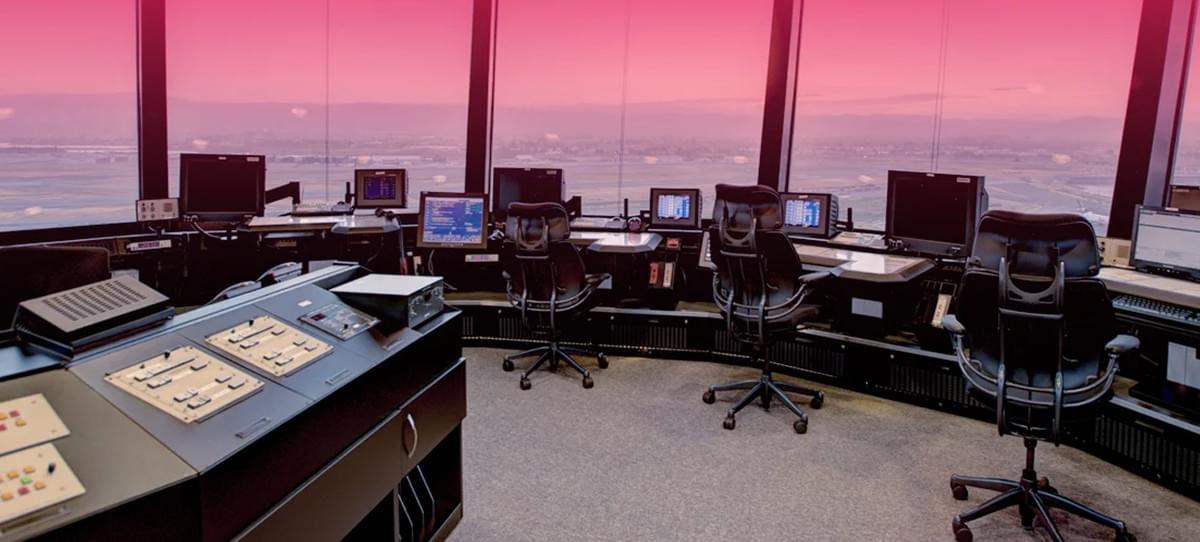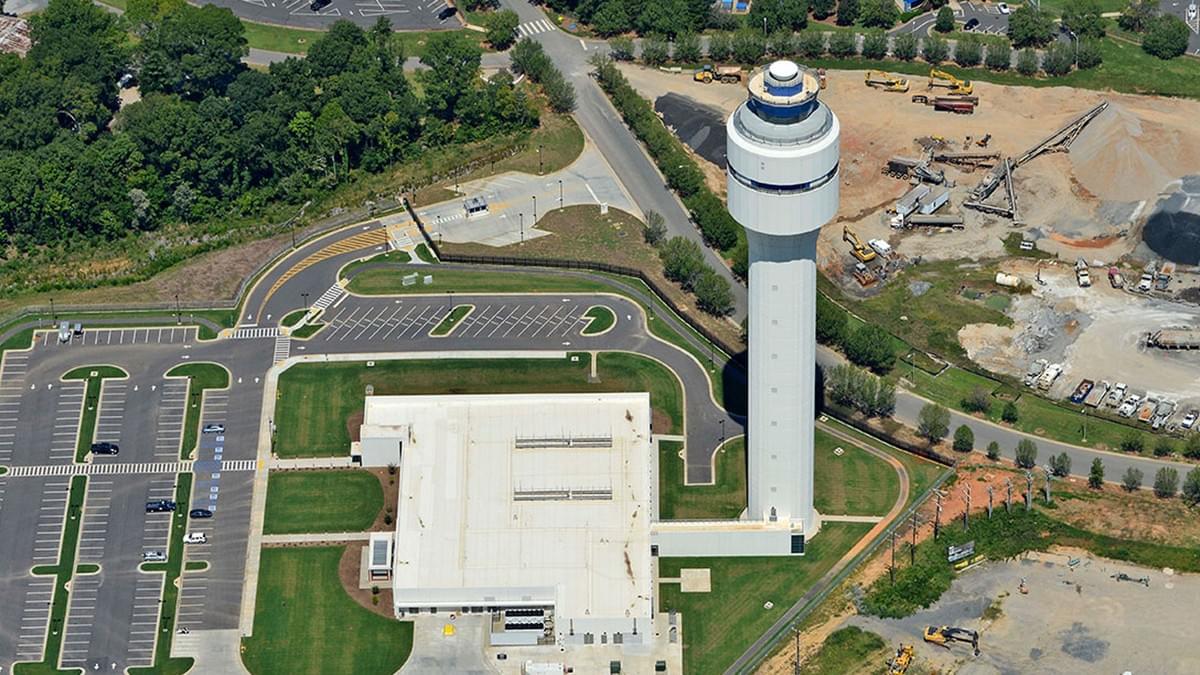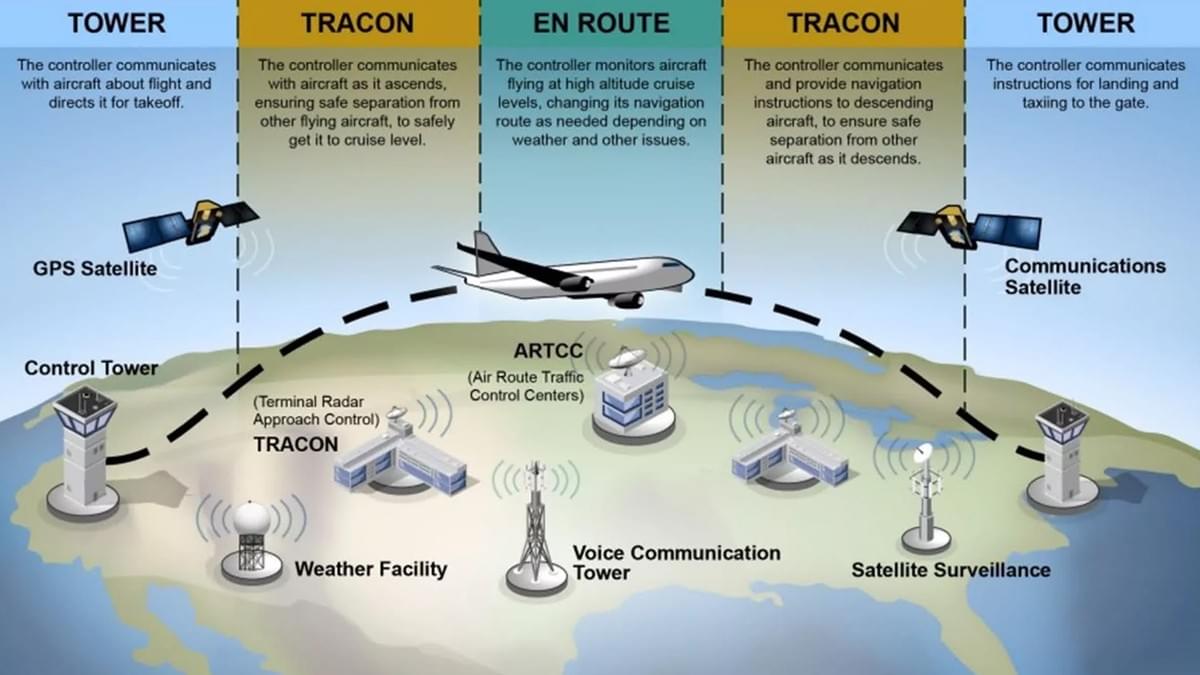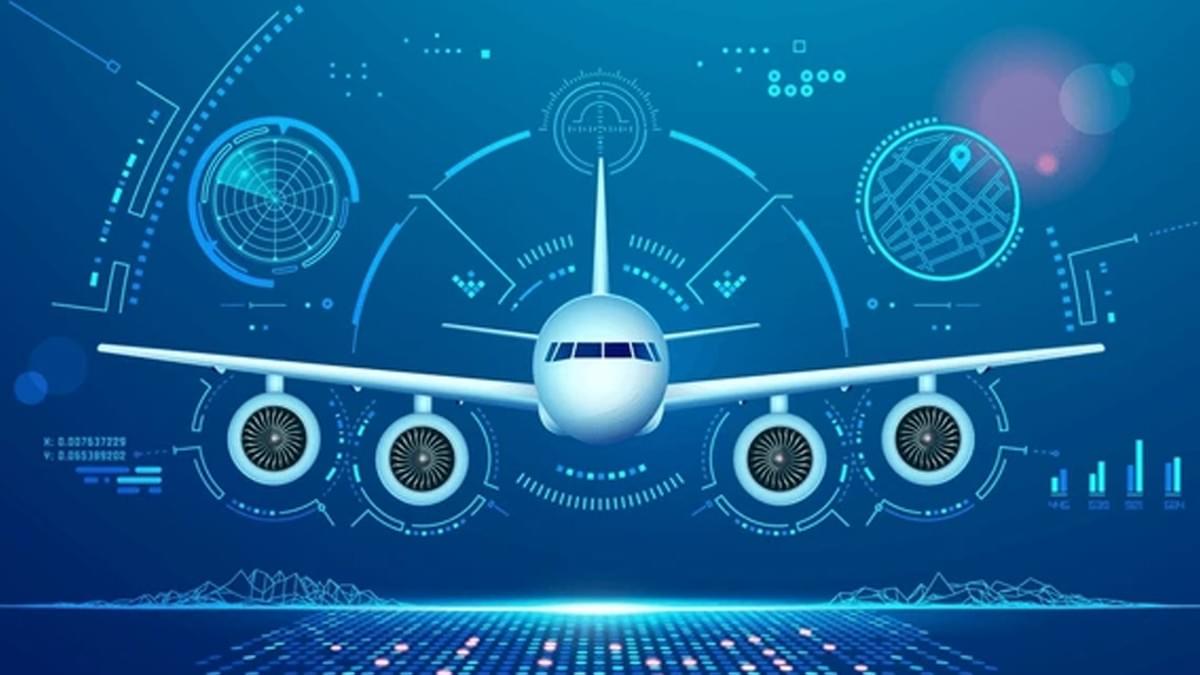Air traffic control is the unsung hero of global aviation. Every minute of every day, air traffic control systems and professionals work to keep skies safe, flights on time, and passengers secure. From managing takeoffs and landings at busy hubs to guiding aircraft through stormy weather, air traffic control is the invisible force that turns chaotic airspace into a well-orchestrated network. In this comprehensive guide, we’ll explore everything you need to know about air traffic control—how it works, why it matters, the technology that powers it, and how investing in advanced air traffic control solutions can transform aviation operations. Whether you’re an airport operator, airline executive, or aviation enthusiast, this handbook will show you why air traffic control is the cornerstone of modern air travel.
What Is Air Traffic Control?
Air traffic control (ATC) is a system of procedures, technologies, and trained professionals responsible for managing the movement of aircraft in the air and on the ground. Its primary goal is to prevent collisions, maintain orderly air traffic flow, and ensure efficient use of airspace. Unlike other transportation management systems, air traffic control operates in three-dimensional space, where even a small miscalculation can have catastrophic consequences.
At its core, air traffic control is a collaborative effort. Air traffic controllers—highly trained specialists—use radar, communication tools, and real-time data to guide pilots from departure to arrival. They coordinate with airport ground crews, meteorologists, and airline dispatchers to make split-second decisions that affect thousands of lives daily. For example, an air traffic controller at a major airport might manage 50+ takeoffs and landings per hour, ensuring each aircraft maintains a safe distance from others while adhering to strict schedules.
Air traffic control systems are divided into distinct segments to handle different phases of flight:
- Tower Control: Manages aircraft on the ground (taxiing) and in the immediate airspace around the airport (up to 5 miles radius). Air traffic control tower teams coordinate takeoffs, landings, and runway assignments.
- Terminal Radar Approach Control (TRACON): Handles aircraft in the broader airspace around an airport (5–50 miles radius), guiding them from the tower’s airspace to en-route centers and vice versa.
- En-Route Control: Manages aircraft during long-haul flights, typically above 18,000 feet, across large geographic areas. En-route air traffic control centers ensure aircraft follow designated flight paths and maintain safe separations.
No matter the segment, air traffic control relies on accurate, real-time data. This data includes aircraft positions, speeds, weather conditions, and runway status—all of which feed into air traffic control systems to inform decisions. Without this data, air traffic control would be impossible, highlighting why technology and information integration are critical to its success.

Why Air Traffic Control Is Indispensable
The importance of air traffic control cannot be overstated. It is the backbone of aviation safety, efficiency, and reliability. Let’s break down why air traffic control is non-negotiable for modern air travel.
Preventing Collisions: The Primary Mission
Safety is air traffic control’s top priority, and its most critical role is preventing mid-air collisions and ground accidents. Before air traffic control systems were standardized in the mid-20th century, aviation accidents were far more common. Today, thanks to air traffic control protocols—such as strict separation standards (minimum distances between aircraft)—the risk of collision is extremely low. For example, air traffic control requires commercial airliners to maintain at least 3 miles of horizontal separation and 1,000 feet of vertical separation in most airspace. These rules, enforced by air traffic control, have made commercial aviation one of the safest modes of transportation.
Managing Airspace Congestion
Global air travel has grown exponentially, with over 100,000 commercial flights daily worldwide. Without air traffic control, this volume would overwhelm airspace, leading to gridlock, delays, and inefficiency. Air traffic control optimizes airspace use by assigning flight paths, altitudes, and timelines that minimize congestion. For instance, at busy airports like Hartsfield-Jackson Atlanta International, air traffic control sequences takeoffs and landings to maximize runway usage—handling over 2,700 flights per day without gridlock. This level of efficiency is only possible with sophisticated air traffic control systems and skilled controllers.
Adapting to Weather and Emergencies
Weather is aviation’s greatest variable, and air traffic control is the first line of defense against weather-related disruptions. When storms, fog, or high winds strike, air traffic control adjusts flight paths, delays takeoffs, or diverts aircraft to safer airports. For example, if a thunderstorm moves into an airport’s airspace, air traffic control will hold departures, reroute incoming flights to alternate runways, or coordinate with pilots to climb/descend to avoid the storm. This proactive management reduces delays and keeps passengers safe.
Air traffic control also plays a critical role in emergencies. If an aircraft experiences engine failure, medical emergencies, or technical issues, air traffic control springs into action—clearing airspace, coordinating emergency landings, and alerting ground rescue teams. In 2009, when US Airways Flight 1549 lost power and landed in the Hudson River, air traffic control’s quick communication with the pilot ensured no other aircraft were in the area, saving 155 lives.
Supporting Economic Growth
Efficient air traffic control is a driver of economic activity. By reducing delays, air traffic control helps airlines save billions in fuel costs and lost revenue. It also enables airports to handle more flights, boosting tourism, trade, and job creation. For example, the European Union’s Single European Sky initiative—aimed at modernizing air traffic control—estimates that improved air traffic control could save €50 billion annually and reduce flight delays by 50%. This underscores how air traffic control is not just a safety tool but an economic asset.

How Air Traffic Control Works: From Takeoff to Landing
Air traffic control is a seamless, multi-stage process that guides an aircraft from the moment it taxis to the runway until it touches down at its destination. Let’s walk through each phase, highlighting how air traffic control systems and professionals collaborate to ensure a smooth journey.
Phase 1: Pre-Flight Planning
Long before an aircraft departs, air traffic control is involved in planning. Airlines submit flight plans to air traffic control authorities, detailing the aircraft’s route, altitude, speed, and estimated departure/arrival times. Air traffic control reviews these plans to ensure they fit within airspace capacity and avoid conflicts with other flights. For example, if two flights plan to use the same route at the same time, air traffic control will adjust one flight’s altitude or departure time to maintain separation.
Weather data is critical here. Air traffic control integrates real-time weather reports—from airport weather stations like Haisen’s BHZG01—into flight plans. If a storm is forecast along a planned route, air traffic control will suggest an alternative path, ensuring the flight avoids hazardous conditions.
Phase 2: Ground Control (Taxiing)
Once the aircraft is at the gate, ground air traffic control takes over. Ground controllers manage all movement on the airport’s tarmac, including taxiing to the runway, parking at gates, and navigating around other aircraft, vehicles, and obstacles. They communicate with pilots via radio, issuing clearances like, “Flight 123, taxi to runway 27 via taxiway A, hold short of runway 36.”
Ground air traffic control relies on surveillance tools—such as surface movement radars and cameras—to track all vehicles and aircraft on the ground. This visibility prevents collisions and ensures efficient taxiing. For example, at night or in fog, these tools allow ground air traffic control to guide aircraft safely, even when visibility is near-zero.
Phase 3: Tower Control (Takeoff)
When the aircraft reaches the runway, tower air traffic control takes command. Tower controllers are responsible for takeoffs and landings, ensuring each aircraft has clear runway access. They coordinate with ground controllers to sequence departures and arrivals, often using a “first-come, first-served” system with adjustments for aircraft size (larger planes need more runway space) and urgency (e.g., medical flights).
Takeoff clearance is the final step: “Flight 123, cleared for takeoff runway 27, wind 360 at 10 knots.” Once airborne, the aircraft climbs to a designated altitude, and tower air traffic control hands it off to TRACON.
Phase 4: TRACON Control (Climb/Descent)
TRACON air traffic control manages the transition from takeoff to en-route flight (and vice versa for arrivals). Controllers here guide aircraft to their cruising altitudes (for departures) or down from cruising altitudes (for arrivals), ensuring they avoid other traffic in the airport’s surrounding airspace.
TRACON uses radar and secondary surveillance radar (SSR)—which pings aircraft transponders for identification and altitude—to track flights. This allows TRACON air traffic control to maintain safe separations, even in busy airspace. For example, a TRACON controller might direct a departing flight to climb to 10,000 feet while routing an arriving flight to descend to 12,000 feet, keeping a 2,000-foot vertical buffer.
Phase 5: En-Route Control (Cruising)
Once the aircraft reaches cruising altitude (typically 30,000–40,000 feet), en-route air traffic control takes over. En-route centers cover large geographic areas (e.g., the continental United States is divided into 21 en-route centers) and manage long-haul flights. Controllers here ensure aircraft follow their assigned routes, maintain safe speeds, and avoid restricted airspace (e.g., military zones).
En-route air traffic control uses high-resolution radar and satellite-based systems like ADS-B (Automatic Dependent Surveillance-Broadcast) to track aircraft. ADS-B, now mandatory in many countries, allows air traffic control to monitor flights more accurately, even over remote areas like oceans, where radar coverage is limited. This technology has revolutionized en-route air traffic control, reducing delays and improving safety.
Phase 6: Arrival and Landing
As the aircraft approaches its destination, en-route air traffic control hands it off to the destination’s TRACON, which guides it through descent. TRACON controllers sequence arriving flights into a “stack”—a holding pattern at specific altitudes—until a runway is available. Once cleared, the aircraft descends further, and TRACON hands it off to the tower.
Tower air traffic control then clears the aircraft for landing: “Flight 123, cleared to land runway 27, wind 010 at 5 knots, caution wake turbulence from the preceding B777.” After landing, tower air traffic control directs the aircraft to taxi to the gate, handing off to ground air traffic control to complete the journey.
Key Technologies Powering Modern Air Traffic Control
Air traffic control has evolved dramatically from its early days of visual signaling and radio communication. Today, it relies on cutting-edge technologies that enhance accuracy, efficiency, and safety. Let’s explore the key technologies that make modern air traffic control possible.
Radar and Surveillance Systems
Radar is the foundation of air traffic control surveillance. Primary radar uses radio waves to detect aircraft position and speed, even if the aircraft has no transponder. Secondary surveillance radar (SSR) works with aircraft transponders, which send back identification, altitude, and speed data—providing air traffic control with more detailed information.
Advanced radar systems like Mode S SSR allow air traffic control to track hundreds of aircraft simultaneously, even in dense airspace. Mode S can also communicate with aircraft, sending commands like “squawk ident” (a request for the aircraft to briefly change its transponder code to confirm identity). This technology is critical for avoiding confusion in busy skies.
ADS-B (Automatic Dependent Surveillance-Broadcast)
ADS-B is replacing traditional radar in many regions, offering superior accuracy and coverage. Aircraft equipped with ADS-B transmit their position, altitude, and speed via satellite signals, which are received by ground stations and shared with air traffic control. Unlike radar, ADS-B works over oceans, deserts, and remote areas, providing global coverage.
For air traffic control, ADS-B means real-time, precise tracking—reducing separation requirements and allowing more efficient flight paths. Pilots also benefit, as ADS-B in-cockpit displays show nearby aircraft, enhancing situational awareness. The FAA mandated ADS-B for all aircraft in U.S. airspace by 2020, and similar mandates exist in Europe, Asia, and beyond.
Weather Integration Systems
Weather is a constant challenge for air traffic control, which is why integrating real-time weather data is critical. Air traffic control systems pull data from airport weather stations, satellites, and radar to monitor conditions like wind shear, fog, and thunderstorms. This data is displayed on controllers’ screens, allowing them to make informed decisions.
Haisen’s BHZG01 Aviation Automatic Weather Observation Station is a prime example of a tool that supports air traffic control. The BHZG01 provides real-time data on wind speed, pressure, humidity, and visibility—all of which feed directly into air traffic control systems. This integration allows air traffic control to adjust flight schedules proactively, reducing weather-related delays.
Communication Tools
Clear, reliable communication is essential for air traffic control. Controllers and pilots use VHF (very high frequency) radios for voice communication, with standardized phraseology to avoid misunderstandings. For example, “Roger” means “message received,” while “Wilco” means “will comply.”
Digital communication is also growing in use. Data Link Communication (DLC) allows air traffic control to send text messages to aircraft, reducing radio congestion and improving clarity. For example, instead of verbally issuing a new altitude, air traffic control can send a digital clearance like “CLIMB TO FL350” (flight level 35,000 feet), which the pilot confirms with a text response.
Automation and AI
Automation is transforming air traffic control, handling routine tasks so controllers can focus on critical decisions. Automated systems can suggest optimal flight paths, predict congestion, and even alert controllers to potential conflicts. For example, if two aircraft are on a collision course, an automated warning system in air traffic control will flag the issue, allowing the controller to intervene.
Artificial intelligence (AI) is taking this further. AI-powered air traffic control systems can analyze historical data to predict delays, optimize runway usage, and even learn from past decisions to improve future performance. In trials, AI has reduced departure delays by up to 20% by more efficiently sequencing flights.

Haisen’s Solutions: Enhancing Air Traffic Control Efficiency
Air traffic control is only as effective as the data it receives—and Haisen’s technologies are designed to provide the accurate, real-time data that air traffic control relies on. From weather stations to integration tools, Haisen’s solutions empower air traffic control to operate more safely and efficiently.
Haisen’s BHZG01: A Game-Changer for Air Traffic Control
The BHZG01 Aviation Automatic Weather Observation Station is a cornerstone of Haisen’s offerings for air traffic control. This advanced system collects critical weather data—wind speed and direction, pressure, humidity, temperature, and visibility—and transmits it directly to air traffic control systems in real time.
Key features of the BHZG01 that benefit air traffic control include:
- ICAO Compliance: The BHZG01 follows International Civil Aviation Organization (ICAO) standards, ensuring its data is compatible with air traffic control systems worldwide. This seamless integration means air traffic control can trust the data without costly conversions or checks.
- High Accuracy: With sensors calibrated to measure wind speed within 0.1 knots and temperature within 0.1°C, the BHZG01 provides the precise data air traffic control needs to make decisions. For example, accurate wind shear detection allows air traffic control to halt takeoffs before dangerous conditions develop.
- 24/7 Reliability: The BHZG01 is built to withstand extreme weather—from blizzards to heatwaves—ensuring air traffic control has data even during storms. Its self-diagnostic features alert technicians to issues before they affect performance, minimizing downtime.
Airports using the BHZG01 report significant improvements in air traffic control efficiency. A regional airport in Asia, for example, reduced weather-related delays by 35% after integrating the BHZG01 into its air traffic control system. “The BHZG01 gives us the data we need to adjust takeoffs and landings proactively,” said an air traffic control manager at the airport. “We’re no longer guessing about weather—we’re acting on facts.”
Integration Tools for Seamless Air Traffic Control
Haisen also offers integration tools that connect its weather stations with existing air traffic control systems. These tools ensure data flows smoothly from the BHZG01 to controllers’ screens, eliminating delays or data silos. For example, Haisen’s software can overlay weather data onto radar displays, showing air traffic control exactly where storms are relative to aircraft positions.
This integration is critical for busy airports, where air traffic control needs a holistic view of conditions. By combining weather data with aircraft tracking, air traffic control can make faster, more informed decisions—such as rerouting a flight around a storm before it enters the airport’s airspace.
Training and Expertise: The Human Element of Air Traffic Control
While technology is vital, air traffic control remains a human-centric field. Skilled air traffic controllers are the backbone of the system, using their expertise to interpret data, make split-second decisions, and communicate effectively with pilots. Let’s explore the training and skills that make air traffic controllers indispensable.
Rigorous Training Programs
Becoming an air traffic controller requires extensive training. In most countries, candidates must complete a rigorous program—often 1–2 years—covering aviation regulations, navigation, weather interpretation, and emergency procedures. Training includes both classroom instruction and simulation exercises, where students practice managing air traffic in realistic scenarios (e.g., stormy weather, equipment failures).
Advanced simulations use real-world data to replicate busy airports, allowing trainees to handle 50+ flights per hour under the guidance of experienced instructors. Only after mastering simulations do trainees progress to on-the-job training, working alongside certified controllers in live air traffic control environments.
Key Skills for Air Traffic Controllers
Air traffic controllers need a unique blend of skills:
- Situational Awareness: The ability to track multiple aircraft simultaneously and anticipate potential conflicts.
- Decision-Making: The capacity to make fast, accurate decisions under pressure—especially during emergencies.
- Communication: Clear, concise radio communication to avoid misunderstandings with pilots.
- Stress Management: The ability to stay calm during high-stress situations, such as severe weather or equipment failures.
These skills, combined with ongoing training (controllers must recertify regularly), ensure air traffic control remains effective even as airspace grows more complex.

Challenges Facing Modern Air Traffic Control
Despite its advancements, air traffic control faces significant challenges—from increasing air traffic to aging infrastructure. Addressing these challenges is critical to maintaining safe, efficient skies.
Growing Air Traffic Volume
Global air travel is projected to double by 2040, with passenger numbers exceeding 10 billion annually. This growth strains existing air traffic control systems, which were designed for lower volumes. Congestion is already a problem at major hubs: in 2023, U.S. flights experienced an average delay of 45 minutes, often due to air traffic control capacity limits.
To address this, air traffic control is turning to automation and AI to handle more flights with fewer controllers. For example, AI-powered sequencing systems can optimize takeoff and landing order, reducing wait times and increasing runway capacity by up to 15%.
Aging Infrastructure
Many air traffic control systems in developed countries are decades old, relying on outdated radar and communication tools. These systems are less reliable, harder to maintain, and incompatible with new technologies like ADS-B. Upgrading infrastructure is costly—estimates suggest the U.S. needs $20 billion to modernize its air traffic control system—but necessary for long-term efficiency.
Countries like Germany and Singapore are leading the way, replacing legacy systems with digital air traffic control platforms that integrate AI, ADS-B, and real-time weather data. These upgrades have reduced delays by 30% and improved safety metrics.
Weather and Climate Change
Climate change is increasing the frequency and severity of extreme weather—from stronger hurricanes to longer heatwaves—posing new challenges for air traffic control. Heatwaves, for example, reduce air density, requiring aircraft to take off at higher speeds (needing longer runways). This can disrupt air traffic control schedules, as longer runways limit the number of takeoffs per hour.
Air traffic control is adapting by integrating more precise weather data—from systems like Haisen’s BHZG01—to predict and mitigate these impacts. For example, if a heatwave is forecast, air traffic control can adjust takeoff sequences to prioritize smaller aircraft (which need less runway) during peak heat hours.
Cybersecurity Risks
As air traffic control becomes more digital, it faces growing cybersecurity threats. Hackers could target radar systems, communication networks, or flight plans, potentially causing delays or even accidents. Protecting air traffic control systems requires robust cybersecurity measures—including encryption, firewalls, and regular vulnerability testing.
Many countries are investing in cybersecurity training for air traffic control personnel, ensuring they can detect and respond to threats. For example, the European Union’s SESAR (Single European Sky Air Traffic Management Research) program includes cybersecurity as a core component, developing tools to protect air traffic control from digital attacks.
Future Trends in Air Traffic Control
The future of air traffic control is marked by innovation, with technologies and practices designed to handle growing demand, enhance safety, and reduce environmental impact. Here are the key trends to watch.
Digitalization and “Single Sky” Initiatives
Countries and regions are moving toward digital, interconnected air traffic control systems. The European Union’s Single European Sky (SES) initiative, for example, aims to replace national air traffic control boundaries with a single, digital network. This would allow air traffic control to manage flights across Europe as a single airspace, reducing delays caused by border restrictions.
Similarly, the U.S. is developing the NextGen air traffic control system—a digital platform that integrates ADS-B, AI, and real-time data to create a more efficient, flexible airspace. NextGen is projected to reduce fuel use by 10% and cut delays by 35% once fully implemented.
Urban Air Mobility (UAM)
The rise of drones and urban air taxis (e.g., eVTOLs—electric vertical takeoff and landing aircraft) is creating new air traffic control challenges. These small, low-flying aircraft will operate in dense urban areas, requiring air traffic control systems that can track hundreds of vehicles simultaneously at low altitudes.
Air traffic control is adapting with new technologies like U-space (in Europe) and UTM (Unmanned Traffic Management) in the U.S.—digital platforms that manage drone and eVTOL traffic. These systems will integrate with traditional air traffic control to ensure safe coexistence between manned and unmanned aircraft.
Green Air Traffic Control
Sustainability is a growing focus, with air traffic control working to reduce aviation’s carbon footprint. One way is by optimizing flight paths: air traffic control can direct aircraft to shorter routes, climb/descend more efficiently, and avoid holding patterns—reducing fuel use and emissions.
For example, continuous descent approaches (CDAs)—guided by air traffic control—allow aircraft to descend from cruising altitude to the runway in a smooth, uninterrupted path, using 15–20% less fuel than traditional step-by-step descents. Air traffic control is also prioritizing flights using sustainable aviation fuel (SAF) to encourage adoption.
AI and Machine Learning
AI will play an even larger role in air traffic control, handling tasks like predicting congestion, optimizing routes, and detecting anomalies. For example, AI systems could analyze historical data to predict which days/times are most likely to see delays, allowing air traffic control to adjust schedules proactively.
Machine learning will also enhance safety, with systems learning to recognize patterns that precede accidents (e.g., sudden wind shear combined with heavy air traffic). These systems will alert air traffic control to risks before they escalate, preventing incidents.
Why Investing in Advanced Air Traffic Control Matters
Investing in modern air traffic control systems and technologies is not just a cost—it’s an investment in safety, efficiency, and sustainability. Here’s why airports, airlines, and governments should prioritize air traffic control upgrades.
Safety First
Advanced air traffic control reduces the risk of accidents. Systems like ADS-B and AI-powered conflict detection provide air traffic control with better visibility and warning tools, ensuring potential collisions are avoided. For example, ADS-B’s global coverage means air traffic control can track flights over oceans—reducing the risk of mid-air collisions in remote areas.
Cost Savings
Efficient air traffic control cuts costs for airlines and passengers. Reduced delays save airlines billions in fuel and operational expenses, which can be passed on to passengers as lower fares. For example, a 10% reduction in delays could save the global aviation industry $15 billion annually.
Environmental Benefits
Optimized flight paths and reduced holding patterns—enabled by advanced air traffic control—lower fuel use and emissions. The International Air Transport Association (IATA) estimates that modern air traffic control could reduce aviation’s carbon footprint by 10–15% by 2030.
Economic Growth
Efficient air traffic control supports more flights, which drives tourism, trade, and job creation. A study by the Airports Council International (ACI) found that each additional flight handled by an airport generates $3,000 in economic activity—highlighting how air traffic control capacity directly impacts local and global economies.
Ready to Enhance Your Air Traffic Control Capabilities?
Air traffic control is the heartbeat of aviation, and upgrading its systems is key to meeting the demands of tomorrow’s skies. Whether you’re an airport looking to reduce delays, an airline aiming to improve safety, or a government seeking to boost economic growth, investing in advanced air traffic control solutions is the answer.
Haisen’s BHZG01 Aviation Automatic Weather Observation Station and integration tools are designed to support air traffic control, providing the accurate, real-time data needed to make informed decisions. With ICAO compliance, high reliability, and seamless integration, the BHZG01 is a smart choice for any aviation facility looking to enhance its air traffic control capabilities.
Contact us today to learn how Haisen’s solutions can transform your air traffic control operations. Together, we can build safer, more efficient skies for everyone.
Invest in air traffic control. Invest in safety. Invest in the future of aviation. Contact Haisen now.

